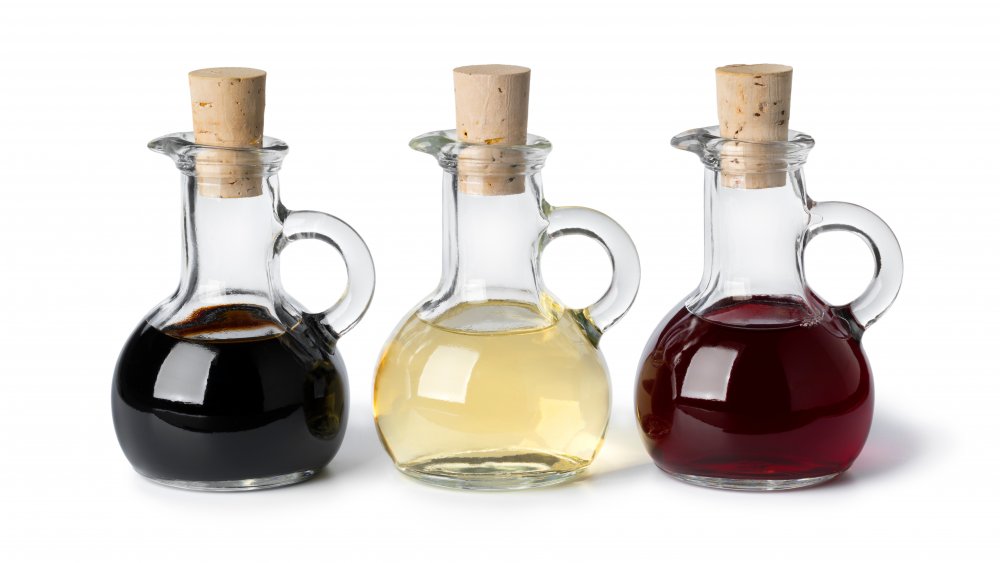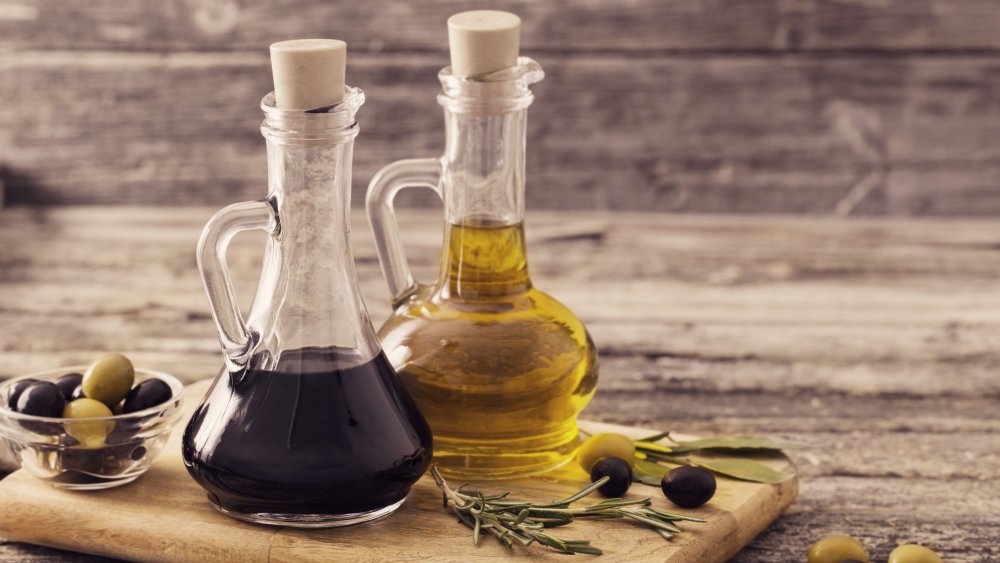The Real Difference Between White Vinegar And Balsamic Vinegar
Though you've probably used vinegar for making salad dressing, you might be surprised to learn that it's lurking in all kinds of different recipes. Part of its versatility is how many varieties you can find – there are dozens of different kinds of vinegar, including red wine vinegar, rice vinegar, and apple cider vinegar (via Bon Appetit). But if you're feeling overwhelmed when you head to the grocery store only to be confronted with rows upon rows of vinegar bottles, start by learning the difference between two basic kinds: white vinegar and balsamic vinegar.
If you're familiar with vinegar at all, you probably know white vinegar best. That's the potent, smelly vinegar that probably makes your nose burn when you take a whiff, and it's powerful enough to clean out scorched pans, or even your countertops (via Chowhound). But as long as you use it in small doses, it can still come in handy when you're cooking. Not to be confused with white wine vinegar, white vinegar is made with acetic acid, which derives from grain alcohol, and is usually diluted with distilled water.
Since it's so strong and the flavor can be overpowering, you'll need to be a little careful if you want to use white vinegar in recipes. According to Epicurious, it can be used to add acidic flavor to sauces and aiolis, and can also be used for pickling. Due to its strength, if you're mixing it into a vinaigrette or sauce, you might want to err on the side of less white vinegar at first.
What is balsamic vinegar?
If you see a bottle of balsamic vinegar sitting next to white vinegar, you'll be able to spot the balsamic right away – while white vinegar is usually clear or light in color, balsamic is dark brown. According to Chowhound, balsamic vinegar is made from grapes, and while high-end bottles (which are usually aged for at least 12 years) can cost $100 for 3 ounces, there are much more affordable options at the supermarket that haven't been aged, though they usually have additives like wine vinegar or thickeners. The less costly bottles will have a tangier, sharper flavor than pricey, pure balsamic.
According to The Spruce Eats, you'll usually use balsamic vinegar for salad dressing, marinades, and as a part of a reduction or sauce for drizzling over food; however, if you decide to splurge for a higher quality balsamic, you can try drizzling it directly over what you're serving without mixing it into a vinaigrette. Unlike white vinegar, you don't want to waste your balsamic on cleaning; stick to making caprese salads and homemade dressing!

